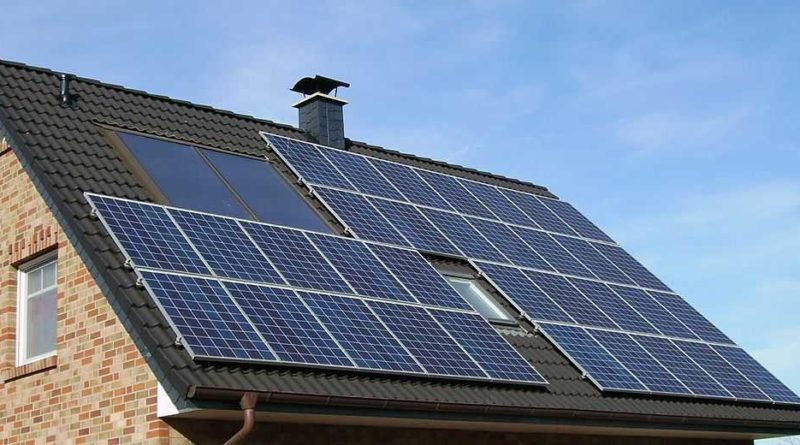5 Facts You Need to Know About Adding Solar to Your House
Today, one of the most significant solutions to greenhouse emissions is solar power. Houses with the solar system will benefit from cutting down on electricity costs while increasing the value of the real estate, without any moving parts or noise. The possibility of tax reductions and government incentives are two more reasons that would make anyone want to jump on the solar roof.
Despite all the benefits, the growth in adoption of solar is more likely to be in areas where electricity prices are very high and where the government provides financial incentives. On top of that, many people are uncertain about the compatibility of their homes with solar panels and obtaining a solar system. If you are considering adding solar panels to your home, whether you are in Canada, USA or sunny South-Africa, there are some things to consider before.
1. What Will the Return on Investment Be
The cost and installation of a solar system are significant. The expected return on investment will vary for each home, and that is why potential gains should be calculated carefully. The subsidies and incentives will vary from province to province as well as from one home to another because the orientation to the sun will be determining how efficient the array will be.
2. What Are the Costs Involved
A solar system can typically cost between $20 000 and $10 000. Yes, that is a lot, but luckily, certain provincial and municipal governments (like in Canada), have varying programs to help with the costs.
Homeowners can sign up for programs and get paid for generating green energy when selling it to the grid. It will depend on how efficient solar panels are, and if your home can produce enough solar power, you can even recoup the initial costs after a few years and profit from there onwards.
The maintenance cost is another thing that one should to keep in mind. It will depend on the company you get the installation from, whether solar panel maintenance is included in the price or not.
3. What Roofs Are Fit for Solar Panels
Any roof type is, in fact, fit for solar, no matter the material or slope, but specific factors need to be taken into consideration before installing solar panels. Due to the long lifespan solar panels have (which can be between 25 to 30 years), it is best if the lifespan of your roof will not come to an end in the first few years. Taking solar panels down and putting them back again does not come free.
It goes without saying that you should make sure that your roof is well maintained before a solar installation is made. A professional roofer should make a roof inspection before installation, or you can inspect the roof by yourself. It has to be done to ensure that roof is not damaged, to calculate whether it is big enough to provide excellent efficiency and to see if it will be able to carry the weight of solar panels.
4. Is Your Home Exposed to the Sun on a Regular Basis
Unfortunately, without enough sun, solar harnessing will not be as efficient, but there are ways around this. First of all, an installation company will have all the tools needed to calculate how much sun your home is exposed to on a daily, monthly and yearly basis. Calculations will be made accordingly by acknowledging the roof’s orientation and size, shadows caused by surrounding obstacles, and how much sun your location receives daily to yearly.
After realizing the amount of sun your home is exposed to, it will be easy to determine the number of panels needed and their positioning to ensure efficient solar power.
5. How the Elements of Nature Affect Solar Panels
The sun is not the only element to which your solar panels will be exposed to. Rain, snow, lightning storm to hurricanes and other weather conditions might have you concerned about how the solar panels will hold up in your location.
Cloudy Days
Even during the cloudy weather, solar panels do their work, no matter many people think they aren’t. You don’t see direct sunlight because of the clouds, but the Sun still gets through the clouds. One more prove – we do see the light during cloudy weather and Sun rays are getting through clouds. Otherwise, it would be a complete dark during the day.
Rainy Days
Maybe you think that rain isn’t good for your solar system, and if so, you’re wrong. Rain has a positive impact on solar panels because it cleans them from dirt and debris. It also cleans droppings from birds, pollen, and leaves, and that is great because they can be a problem and disturb solar panels to get the sunlight.
Very High Temperature
Everyone would think that a high temperature is a great benefit for solar systems, but it is actually a disadvantage. Very high temperature isn’t good for solar panel system because it decreases its productivity and lowers the power output. That occurrence is known as a voltage drop.
Final Thoughts
Luckily, solar panels are made to be very durable, and most products come with a decent warranty. However, in areas where panels are exposed to extreme weather conditions, it is best to take out the needed insurance or confirm with the installer whether the warranty covers damages of such nature. Different weather conditions can have a different impact on the solar power system, some of them good, and some of them bad.
Solar panels are in most cases a significant investment which will eventually pay off in savings, and you should definitely reconsider installing a solar panel system on your roof. In areas where solar efficiency is low, there is always the option to make use of a solar battery. The best way to be sure that your roof will be able to harness solar power efficiently is to find a trustworthy solar installation company in your area.

